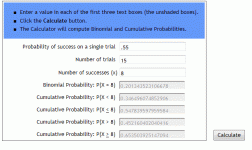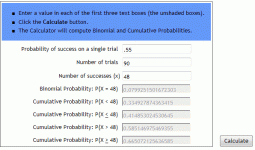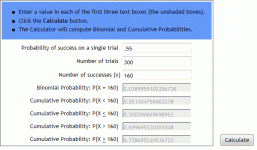There are a lot of great, simple ideas from statistics that can be used for pool. For instance, if you are slightly better than another player (or versa vice) what are the odds of winning a race to something?
Suppose they are slightly better than you...let's say 55% of the time they'll win a game. That'd mean that you'd have a 45% chance, which doesn't sound all that bad, does it? But in a race, the probabilities are added. The longer the race, the less chance you'll win it! In a race to 8, for instance, they are likely to win a little better than 65% of the time.
If you want to know how to calculate for other races, or different probabilities, the relevant mathematics is here:
http://nrich.maths.org/353/solution
You could, of course, hope they have a bad day, and you have an exceptional one....
If there is enough interest in this kind of thing, I'll post how to use statistics to predict high runs based on average runs, or the likelihood of making a certain number of balls on the break, based on your average number of balls made on the break.
The binomial distribution can be used to model all of the examples you've listed.
With all of the posts on breaking Mosconi's 526 run, one interesting application would be the liklihood of a current top player beating the record. If we know the probability that John Schmidt will run a single rack, we could use the binomial distribution to estimate the probability that he would run enough racks to beat the record. I would guess 526 is not as unreachable as most people think.


